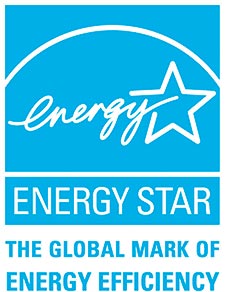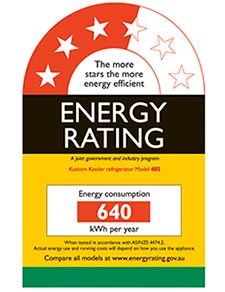From Habitat magazine - issue 09
Look around any appliance store and you’ll see fridges, washing machines, driers, all emblazoned with star stickers. What do they mean and are all stars created equal over time?
If there’s one message that’s impossible to hide from right now, it’s the rallying cry towards energy efficiency and sustainability. In fact, it’s hard to get through the day without being reminded of it through some form of media or marketing.


For those who have still to remove the star-rating sticker off their new appliance, it’s there every time a load of whites goes on or they reach for the butter. What do those stars mean, though, and who put them there?
The New Zealand appliance rating programme is the brainchild of the e3 – a joint venture between New Zealand’s Energy Efficiency and Conservation Authority (EECA) and the Australian Department of the Environment, Water, Heritage and the Arts – which was set up specifically to promote a sustainable future by encouraging us to change the way we think about and use energy. Legislatively, EECA is underpinned by the Energy Efficiency and Conservation Act 2000, which established the authority as a Crown entity.
Information on the label rating system can be found at the joint NZ-Australian website.
At the centre of the EECA’s mandate is the New Zealand Energy Efficiency and Conservation Strategy. This is an action plan to promote sustainability as part of our national identity; improve the quality of life for families; and drive economic transformation in business. So, the key function of the EECA is: “to encourage, promote and support energy efficiency, energy conservation and the use of renewable energy sources”.
One of the ways to make that happen is through energy rating labels for products and appliances. The first step was to develop a tool that would allow people to assess how much energy was being consumed by their household appliances. It was also important that the performance of one brand and model could be compared against others with similar specifications. Hence the labels.
The labels are designed to help the consumer assess how much energy a particular product will use in a year of normal usage. Each star on the rating sticker stands for an increase in energy savings, with many high-scoring models featuring four or more stars.
Some appliances, however, may carry more than one band of stars. For instance heat pumps/ air conditioners have red and blue star bands – the red band shows an assessment of their heating capabilities and the blue band shows their cooling performance.
In the yellow box below the bands of stars, a figure shows how many kilowatt hours (kWh) of electricity the appliance will typically use in a year, so this is the figure that’s useful when it comes to estimating annual running costs. To get to that estimate, you simply need to multiply the number in the box by your electricity tariff, as it’s listed on your bill (e.g. 21c per kWh).
To reach a lifetime running cost, multiply that annual total by 10 – most appliances have an effective estimated lifetime of about 10 years, says EECA. This figure is like a second price tag, letting you know your ongoing overall running costs on top of the purchase price.
So, your new washing machine is sitting in the laundry, proudly boasting its five stars; the same high rating as the fridge you bought eight years ago. You’re signed and sealed with your energy efficiency, right? Wrong.
Advances in technology, and increasingly rigorous testing and stringent requirements, mean that the fridge so highly rated a few years ago would struggle to get any stars at all today and be allowed to market. And that’s why the Government’s pushing so hard to get households to remove the old beer fridge in the garage.
For annual running costs, simply multiply the number in the sticker’s box by the electricity tariff stated on your bill.
So what’s ahead for the programme? In addition to the already familiar labels, EECA has launched with Land Transport New Zealand a system of vehicle fuel economy labels. This means all new cars and all cars manufactured since 2000 and imported since 2005 for sale in New Zealand must display information about the vehicle's fuel economy, where that information is available.
The 2006 amendment to the Act to include stand-by power consumption in the ratings for some appliances is making a significant difference to how many stars they can carry as well. And let’s not forget Energy Star®, the global mark of energy efficiency. Products with this mark must be tested and shown to be in the top 25 percent for energy consumption. Energy Star® lets consumers know at a glance which are the most energy-efficient products on the market in any given appliance category. And that’s the idea, really!
For more information on how to be more energy efficient, visit the Energywise™ website.
The energy rating stickers work extremely well if you’re shopping for a new appliance but beware of using them to assess older appliances as advances in technology mean that the fridge so highly rated a few years ago would struggle to get any stars at all today.
words: Rachel Macdonald
Search habitat magazine stories
Printed copies of habitat highlights are available from late March 2024 at Resene ColorShops and resellers, while stocks last. You can view back issues of habitat magazine online.
Specifiers:
If you have an idea, project or story that you think would suit habitat, we’d love to hear from you. Please drop us an email with your details and include photos if submitting a project.
Sign up for a DIY card and Save! Australia | New Zealand